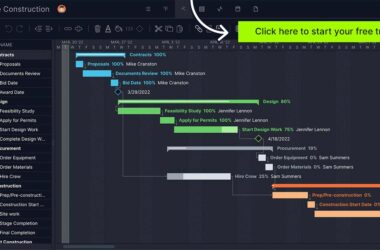Executive Summary
In this blog, Matt Henderson, CFO at Kolme Group, tackles one of the most frustrating challenges for PMO leaders today: integration overload. While having a variety of specialized tools may seem efficient, disconnected systems often cause more harm than good—leading to data silos, reporting inaccuracies, and wasted time on manual work. Drawing from real client experiences, Matt outlines four actionable steps to reduce tool chaos: mapping your tech stack, defining your “source of truth,” integrating with intent, and maintaining strong governance. If your PMO is drowning in disconnected apps, this article offers a smarter path forward.
Suffering from an Integration headache?
If you’re a PMO leader, chances are your team is juggling a handful of tools—maybe more. You’ve got your project management tool, your resource planner, your time tracking app, your financial forecasting software, and then whatever your teams are secretly using to “make life easier.” Sound familiar?
At first glance, having best-of-breed tools for every function sounds great. But in reality, disconnected tools often lead to more pain than progress.
The Hidden Cost of a Fractured Toolset
On paper, it seems efficient: Tool A for planning, Tool B for time tracking, Tool C for reporting. In practice? You’re constantly chasing down data, reconciling conflicting metrics, and wondering why your “single source of truth” has three different versions.
When tools don’t talk to each other:
- Project and resource data becomes siloed
- Teams duplicate effort entering the same information in multiple places
- Reports are out of sync—or worse, inaccurate
- PMs spend more time on admin than on actual project delivery
The result? Slower decision-making, eroded trust in the data, and frustrated teams.
It’s Not Just a Tech Problem—It’s a Business Problem
We’ve worked with dozens of organizations where integration challenges quietly eroded PMO performance. In one case, a client had four different tools feeding into a “master” project dashboard—but every Monday morning was spent manually cleaning up the discrepancies. The PMO director was burning 6-8 hours a week reconciling project status reports. Multiply that across a portfolio, and you’re looking at serious operational drag.
Integration issues aren’t just a nuisance—they’re a barrier to scalability, data-driven decision making, and strategic alignment.
So, What’s the Fix?
Let’s be real—ripping and replacing your toolset is rarely the right first move. Instead, here are a few practical steps you can take:
Step 1: Map Your Tool Ecosystem
Start by understanding what tools are in play (official and unofficial). Create a simple map that outlines:
- The purpose of each tool
- Who uses it
- What data it collects
- Where that data goes
You’ll quickly spot overlaps, gaps, and bottlenecks.
Step 2: Identify Your “Source of Truth”
Not every system needs to do everything. But you do need to decide where each type of data ultimately lives. For example:
- Time entries → PSA tool
- Project health/status → PM platform
- Financials → ERP or finance system
Establishing these boundaries helps reduce duplication and confusion.
Step 3: Integrate with Intent
Use APIs, native connectors, or middleware platforms (like Zapier, Make, Workato, or Power Automate) to connect your tools strategically. Focus on integrations that:
- Eliminate manual entry
- Improve data accuracy
- Support key business processes (not just “nice-to-haves”)
Don’t automate chaos. Fix the process first, then build the bridge.
Step 4: Monitor, Govern, and Evolve
Set up simple governance practices:
- Review tool usage quarterly
- Sunset unused or redundant tools
- Adjust integrations as workflows evolve
A unified tool ecosystem isn’t a one-and-done project—it’s an ongoing optimization effort.
What Good Looks Like
We recently worked with a professional services firm that had five different PM tools across departments. After mapping their ecosystem, we helped them consolidate into a single work platform with modular integrations for finance, CRM, and resourcing. The result? Real-time portfolio reporting, 40% reduction in manual admin time, and a team that finally trusted the data.
You Don’t Need More Tools. You Need Smarter Ones.
Tool sprawl is one of the biggest hidden threats to PMO effectiveness—but it’s also one of the most solvable. The key is to focus on intentional integration that aligns with your business goals, not just your wishlist.
Let’s Keep the Conversation Going
Need help building a tech stack that actually works for your organization? You don’t have to go it alone. At Kolme Group, we’ve helped hundreds of PMOs strike the right balance between structure and flexibility. Let’s talk, simply click here and tell us how we can support you.
Email easier? Reach out at ppmanswers@kolmegroup.com and let’s build something great—together.
The post The Integration Headache: Why Your PM Tech Stack Might Be Hurting More Than Helping appeared first on Kolme Group.





